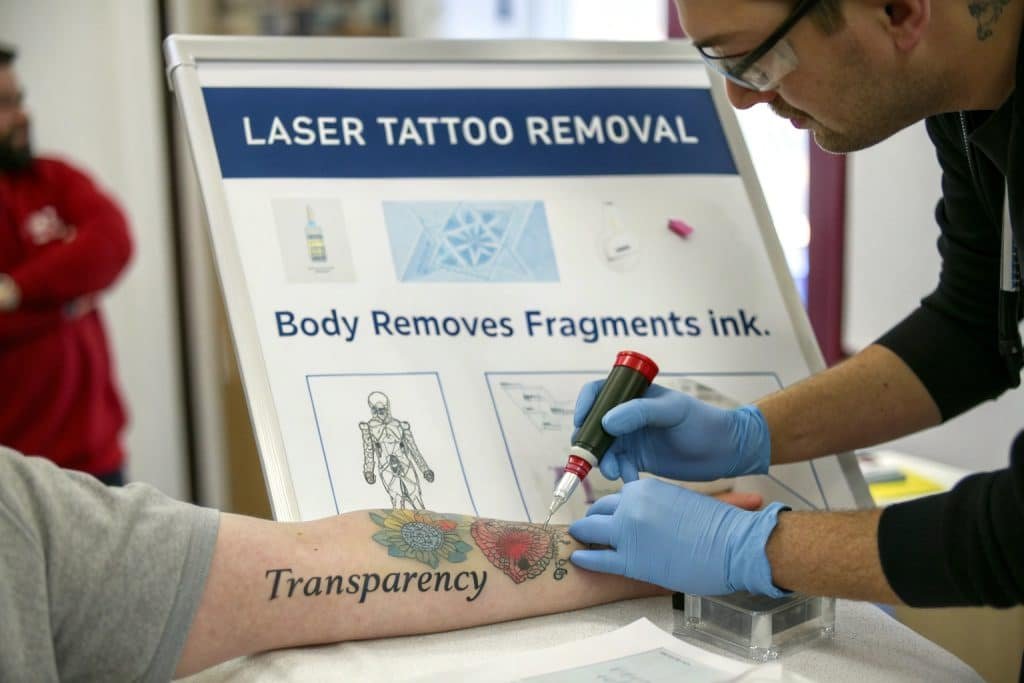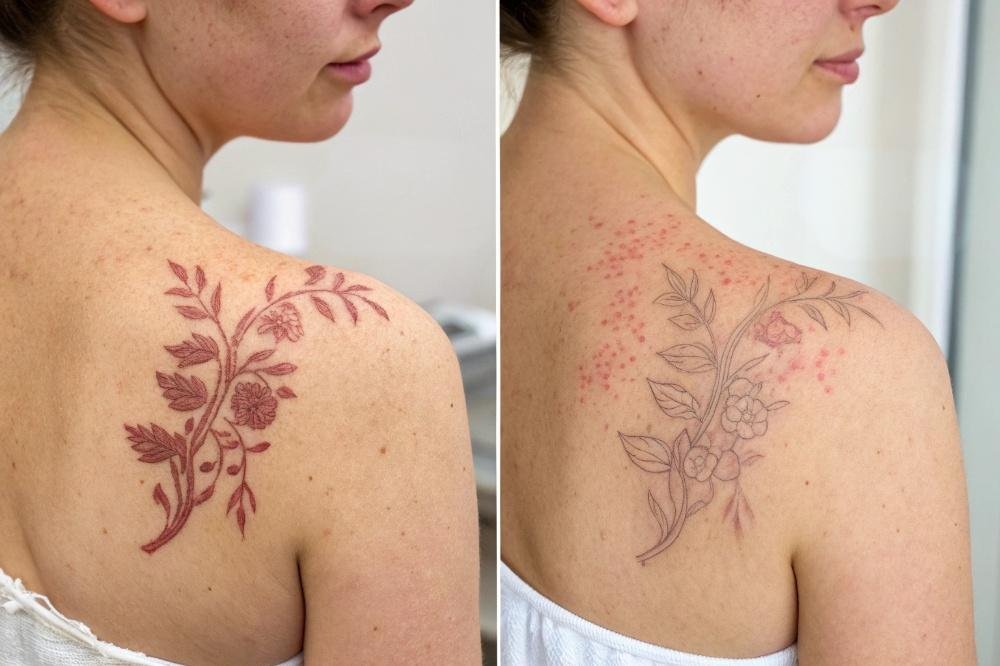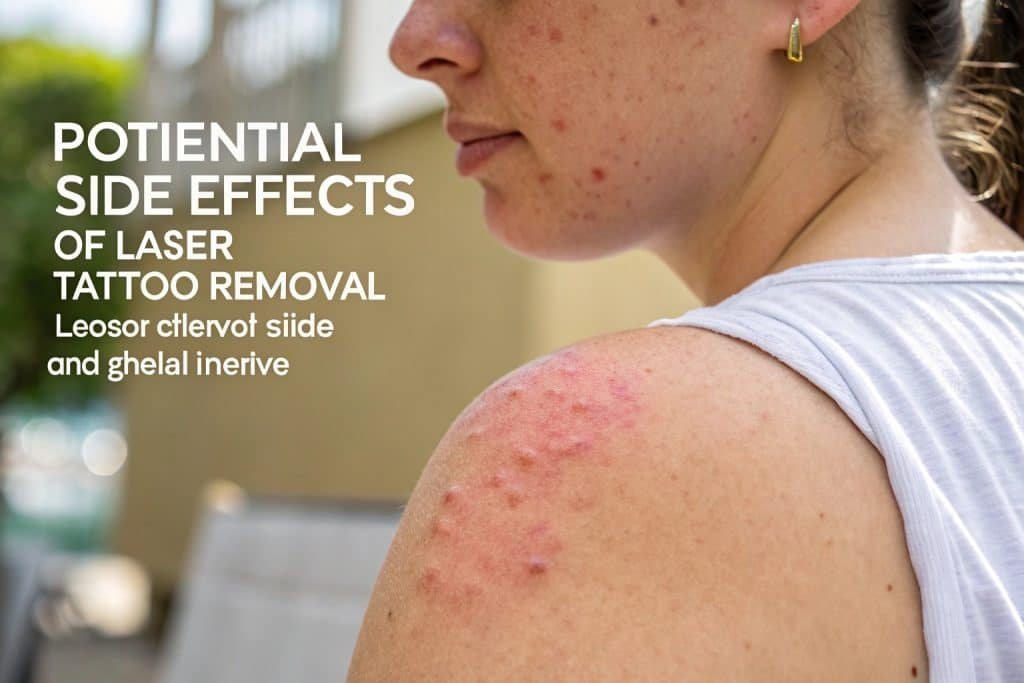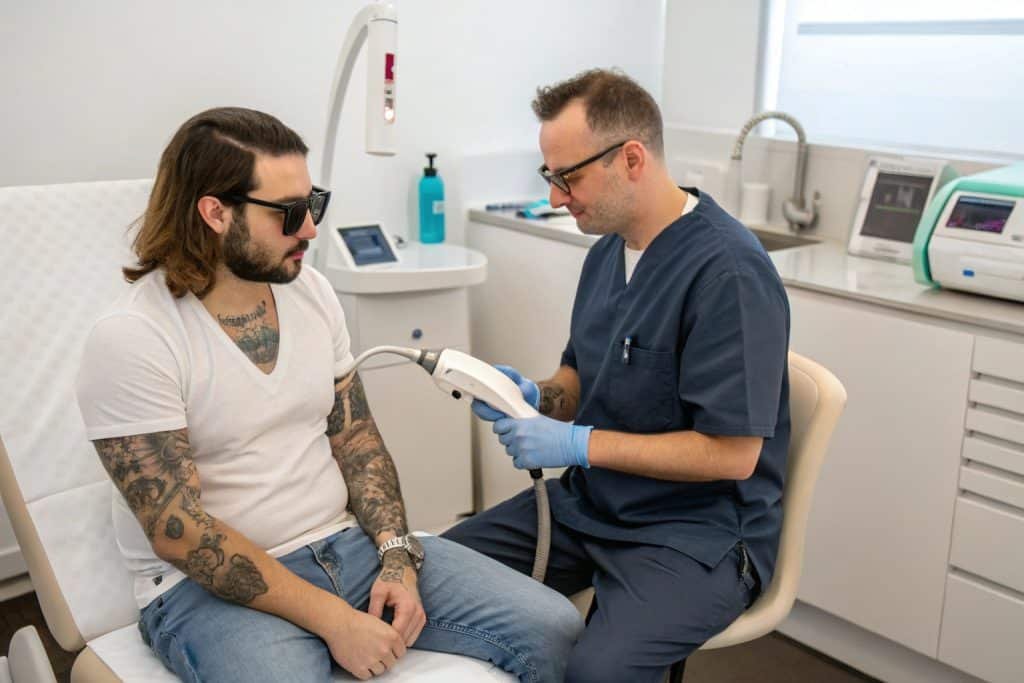Clients fear unknown side effects.Fear prevents them from a desired service.Honest and clear information builds trust.
Laser tattoo removal is generally safe. It uses focused light to break down tattoo ink. The body then removes these ink fragments. But, like any procedure, side effects can happen. Transparency is vital.

Understanding is key to informed consent.
Laser Tattoo Removal Side Effects: Separating Fact from Fiction – A Comprehensive Guide for Professionals
Misinformation creates anxiety.Anxiety can stop bookings.We provide facts to empower professionals.
The laser interacts with skin, targeting ink. This can cause some reactions. These are mostly temporary. This guide offers the full picture.

Let's explore what to really expect.
Common, Short-Term Side Effects: What Can Clients Realistically Expect After a Session?
Clients need clear expectations.Unrealistic expectations lead to disappointment.We outline the typical, temporary reactions.
Most side effects are minor and resolve quickly. These are normal parts of healing.
Redness (Erythema):
- Normal Inflammation: Yes. The laser causes controlled injury, triggering the body's healing response.
- Duration: Usually a few hours to a few days.
Swelling (Edema):
- Duration: Typically 24-48 hours. Can last longer, depending on tattoo size and location.
- Cause: The body's response to the laser's heat and the ink breakdown.
- Management: Cold compresses, elevation (if possible).
Tenderness and Pain:
- Discomfort Level: Mild to moderate. Like a sunburn or rubber band snap.
- Reality: It's not usually severe, but individual pain tolerance varies.
Blistering:
- Why It Happens: The laser's heat can cause small fluid-filled blisters. More common with higher energy settings.
- Treatment: Keep them clean and covered. Do not pop them. Allow them to heal naturally.
Scabbing and Crusting:
- Natural Healing: Yes. Part of the body's process of eliminating the broken-down ink.
- Important: Do not pick or scratch. This increases the risk of infection and scarring.
Itching:
- Relief: Keep the area moisturized. Cool compresses can help. Avoid scratching.
Temporary Hypopigmentation or Hyperpigmentation:
- Skin Tone Changes: The laser can temporarily lighten (hypopigmentation) or darken (hyperpigmentation) the treated skin.
- Return to Normal: Often resolves within weeks or months. Sometimes it can be longer lasting or, rarely, permanent.

These are usually temporary. Let's address less frequent risks.
Less Common, But Potential Side Effects: Understanding the Risks
Clients must be informed of all possibilities.Full disclosure builds trust and manages expectations.Detail the less frequent, but important, risks.
Serious side effects are rare, but awareness is crucial.
Infection:
- Prevention: Strict aftercare. Keep the treated area clean and dry. Follow instructions carefully.
- Treatment: Antibiotics (topical or oral) if infection occurs. Seek medical attention.
Permanent Hypopigmentation or Hyperpigmentation:
- Risk Factors: Darker skin types (Fitzpatrick IV-VI) are at higher risk. Improper laser settings or poor aftercare can also contribute.
- Who is most affected?: People of color.
Scarring:
- Possibility: Rare, but possible. Keloid or hypertrophic scarring can occur.
- Minimizing Risk: Proper laser settings, experienced operators, and good aftercare are essential.
- Risk factors: People with a history of keloids or hypertrophic scarring are at higher risk.
Texture Changes:
- Potential: The skin's texture might change slightly.
- Causes: Improper settings, aggressive treatment.
Tattoo Ink Allergy:
- Signs: Redness, swelling, itching beyond the normal reaction.
- Management: May require antihistamines or corticosteroids. Consult a doctor.
Paradoxical Darkening:
- Why: Some inks (especially cosmetic tattoos) can darken instead of fading.
- Reversal: May be difficult to correct. Requires careful testing and potentially different laser wavelengths.

Knowledge is power. Now, how to minimize these risks.
Minimizing Side Effects: Best Practices for Laser Tattoo Removal Professionals
Reduce risks, maximize client satisfaction.Negative outcomes damage reputation and business.Proven strategies for safe, effective treatments.
Careful procedures and client education are key.
Thorough Client Consultation and Skin Assessment:
- Identify Risks: Medical history, skin type (Fitzpatrick scale), tattoo characteristics (age, colors, location).
Choosing the Right Laser and Settings:
- Individualized Treatment: Wavelength, pulse duration, fluence, and spot size must be tailored to the client and tattoo.
Proper Cooling Techniques:
- Reduce Thermal Damage: Cooling before, during, and after treatment is vital. Protects the skin.
Detailed Aftercare Instructions:
- Optimal Healing: Wound care, sun protection, avoiding irritants. Provide written instructions.
Test Spots:
- Necessary?: Especially important for darker skin types. Assess skin reaction before full treatment.
Managing Client Expectations:
- Honesty and Transparency: Be realistic about the number of sessions needed and potential outcomes.

Be prepared for anything.
Handling Complications: What to Do If a Side Effect Occurs
Be prepared for adverse events.Proper response protects both the client and your practice.A clear protocol for managing complications.
Swift action and clear communication are critical.
Key Steps:
- Clear Protocol: Have a written plan for handling adverse events.
- Communication: Communicate with the client promptly and effectively.
- Referral: Know when to refer to a physician or specialist.
- Documentation: Document all side effects and treatments in detail.
- Insurance: Maintain adequate insurance and liability coverage.
These policies demonstrate professionalism.
The Long-Term Outlook: What Happens to the Skin Years After Laser Tattoo Removal?
Clients want to know the long-term effects.Reassurance about lasting skin health is important.Address long-term considerations.
Generally, the skin returns to normal. Long-term side effects are rare.
Long-Term Skin Health:
- Appearance: Usually good. Skin should look and feel normal.
- Delayed Side Effects: Rare, but possible (pigment changes, texture changes).
Sun Protection:
- Lifelong Importance: Sun protection is crucial to prevent pigment changes and maintain skin health.
Will the tattoo be completely removed?
- It may be.
Is It Always Successful?
- No.
Delya prioritizes long-term client well-being.
Conclusion
Laser tattoo removal is safe and effective. Side effects are usually minor and temporary. Serious complications are rare. Honest communication, good aftercare, and choosing experienced professionals are essential. It's important to give patients realistic expectations.
